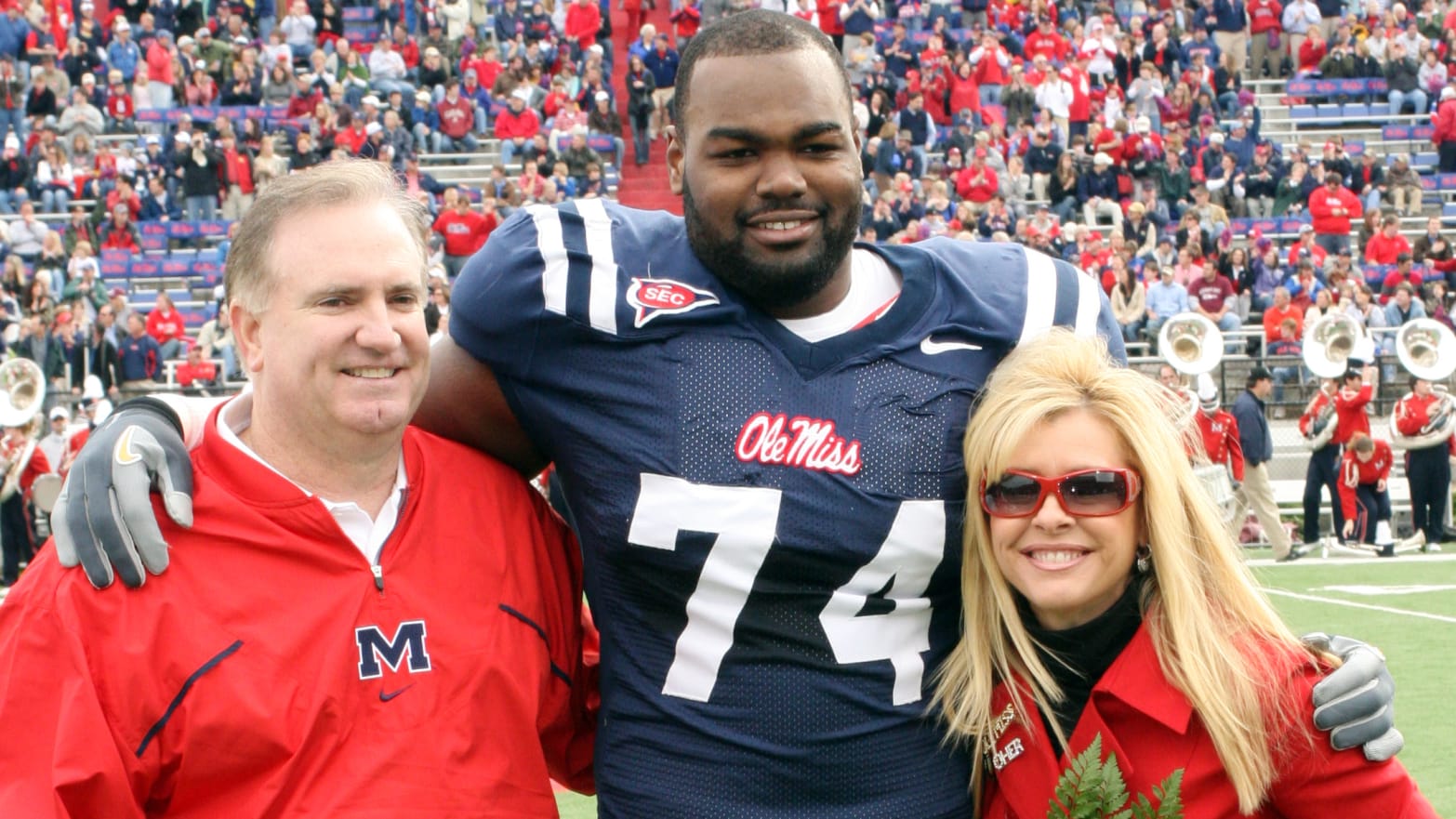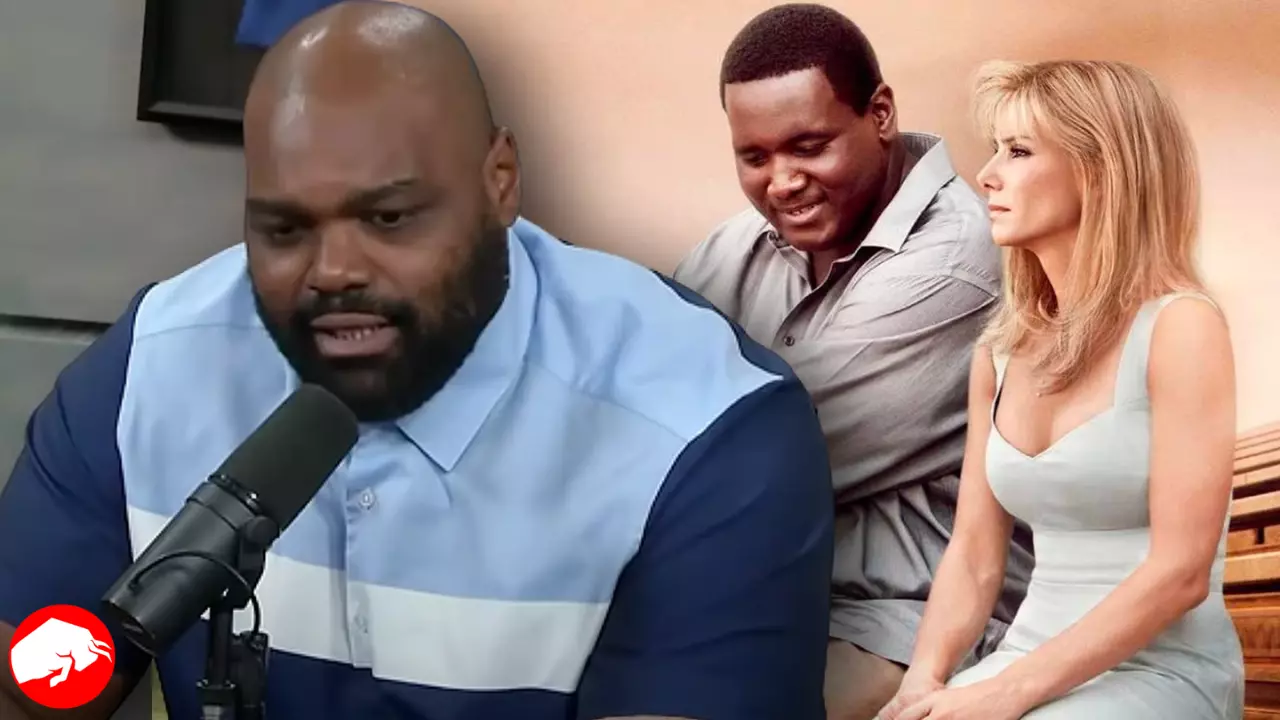The Blind Side Controversy: Oher vs. The Tuohys

The touching narrative chronicling Michael Oher’s journey from the depths of poverty to success, beautifully portrayed in the cinematic adaptation The Blind Side, is now veering into an unexpected and complex direction. The Tuohys, the compassionate family who are pivotal characters in this cinematic rendition, find themselves embroiled in a storm of contentious legal disputes with the film’s protagonist and retired NFL sensation, Michael Oher.
From Oher’s perspective, he paints a picture of betrayal, suggesting that the Tuohys, who he believed were his pillars of support, deceived him. He claims they gave him false hopes of adoption and went behind his back to finalize a movie deal that conveniently left him out of the financial equation. In stark contrast, the Tuohys vehemently refute these claims. They view Oher’s accusations as nothing more than a strategic move to garner publicity amidst the promotion of his latest book. Moreover, they allege that Oher’s intentions are not just to tarnish their reputation but also to extract a staggering $15 million from them under the guise of these allegations.
A Movie Deal that Sparked the Conflict
Michael Lewis, the esteemed author behind the source material that inspired The Blind Side, and also a close acquaintance of Sean Tuohy since their earlier days, was undoubtedly thrilled when the prospect of translating his literary work to the big screen arose. On the surface, the arrangement appeared to be clear-cut and devoid of complications. Marty Singer, who stands as the legal voice for the Tuohy family, emphasizes that the family had always been transparent and steadfast in their commitment.
They guaranteed that the financial rewards stemming from The Blind Side’s success would be equitably distributed amongst all the parties involved. Time and again, they have publicly reiterated their stance, asserting that Oher was never shortchanged and was always given his rightful and “equal cut of every penny” from the film’s profits.
Yet, as with many tales of fame and fortune, there exists another side to the story. Anne Johnson, championing Oher’s cause, paints a rather different picture. She draws attention to the Tuohy’s dealings with 20th Century Studios, suggesting that they brokered a highly favorable deal that overwhelmingly advantaged them and their two offspring.
In contrast, Oher, the very individual whose life story was at the epicenter of this cinematic endeavor and which subsequently raked in a whopping $330 million, was allegedly sidelined, reaping none of the financial windfall. What adds another layer of complexity to this narrative is that this controversial agreement was seemingly forged even before Alcon Entertainment stepped into the picture to helm the film’s production.
The Conservatorship Conundrum

In the whirlpool of allegations and counter-allegations, one claim stands out prominently, casting a shadow over the entire dispute. At the heart of this contention are certain documents, which Michael Oher alleges he was misled into endorsing. These critical documents, unbeknownst to Oher at the time, designated the Tuohys as his official conservators. This pivotal change shifted the balance of power, causing Oher to relinquish authority over not just his financial dealings but also other legal matters. These are rights and controls that would have unambiguously remained with him, had there been a formal adoption process.
In defense of their actions, the Tuohys present their side of the narrative. They emphasize that their move to become Oher’s conservators wasn’t a power play but rather a decision made with Oher’s welfare in mind. They argue that the conservatorship was an essential step to ensure that Oher received assistance with fundamental requirements, whether it be accessing health insurance, acquiring a driver’s license, or navigating the intricacies of college admissions. Lending weight to the family’s perspective, their legal representative, Marty Singer, vocalized their commitment.
He unequivocally stated, “Should Mr. Oher ever decide to end the conservatorship, be it now or sometime in the unforeseeable future, the Tuohys will stand by his decision, offering no resistance whatsoever.”
But the ramifications of the conservatorship don’t end with just the loss of control over monetary assets. Oher’s legal petition brings to light another contentious point. He alleges that the Tuohys, leveraging their position, negotiated an agreement with 20th Century Studios. This agreement purportedly granted the studio unparalleled and exclusive access to Oher’s personal brand, narrative, and experiences, all without offering him any form of monetary recompense.
What deepens the intrigue surrounding this claim is the growing chatter about the authenticity of Oher’s signature on the said document. Rumors and speculations suggest that it might have been forged, adding yet another layer of complexity to the already tangled saga.
Behind the Family Facade
The Tuohys, who have long portrayed themselves as Oher’s beacon of “structure, support, and, above all, unconditional love,” now find themselves navigating the stormy seas of contention with him. Their narrative, which has been widely circulated, delves into the depths of their strained relationship with Oher, highlighting his purported threats and an audacious demand for a whopping $15 million. According to the family, Oher’s modus operandi was to wield the potent weapon of negative media publicity to exert pressure on them.
In a more recent communication with the public, Oher, sounding palpably upset, articulated the depth of his sorrow upon realizing that the bond he believed he shared with the Tuohys lacked the legal stamp of a formal adoption. While his plea is for understanding and respect for his privacy during such a challenging juncture, the unfolding legal saga suggests that many more twists and turns are awaiting revelation.
Not to be overlooked in this convoluted tale is a significant financial move by Sean Tuohy. Back in 2019, in a move that drew considerable attention, he liquidated a substantial number of his restaurants and real estate holdings. This savvy business decision saw him pocketing a staggering sum of $213 million.
As we bear witness to the unfolding of this real-life melodrama, the hope remains that the dust will eventually settle, paving the way for transparency and justice to prevail. It’s an ironic twist that both these key figures, who once collectively constituted the emotional backbone of the uplifting tale of The Blind Side, now find themselves caught up in a storyline that starkly contrasts with the film’s uplifting narrative.









